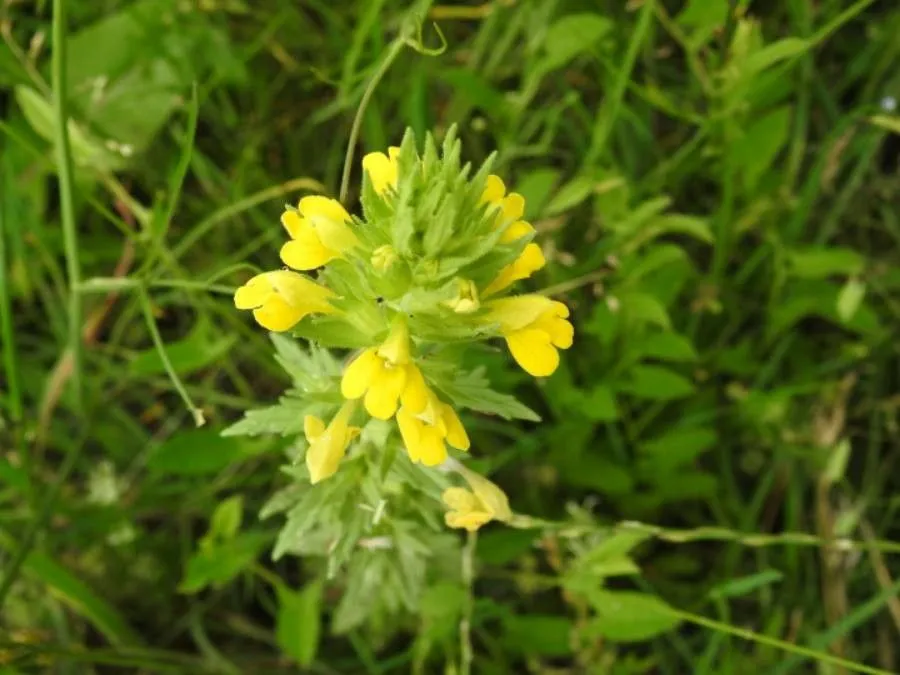
Author: (L.) Caruel
Bibliography: F.Parlatore, Fl. Ital. 6: 482 (1885)
Year: 1885
Status: accepted
Rank: species
Genus: Parentucellia
Vegetable: False
Observations: Macaronesia, W. Europe to Medit. and N. Iran
Sticky-bartsia (Parentucellia viscosa) is a distinctive flowering plant belonging to the Orobanchaceae family. This species was thoroughly documented by F. Parlatore in the Flora Italiana in 1885, with additional contributions by Caruel, providing a significant understanding of its taxonomy and characteristics.
Parentucellia viscosa showcases a fascinating ecological distribution, spanning regions from Macaronesia (a collection of four archipelagos in the North Atlantic Ocean) and extending through Western Europe, the Mediterranean basin, and even reaching as far as northern Iran. This broad habitat range signifies its adaptability to varied climatic conditions and environments.
The plant is particularly noted for its viscous, or sticky, nature, which not only inspires its common name but also plays a role in its ecological interactions. The sticky exudates on its stems and leaves may help in capturing small insects, which potentially aids the plant in nutrient acquisition, supplementing its growth in nutrient-poor soils.
In terms of morphology, Sticky-bartsia typically exhibits bright yellow flowers, which contrast strikingly with the often green to reddish stems they adorn. These petals are conspicuously tubular and bilaterally symmetrical, a characteristic feature shared among many in the Orobanchaceae family. The leaves of Parentucellia viscosa are generally lance-shaped and possess sticky glandular hairs, contributing to its overall viscous feel.
Ecologically, Sticky-bartsia often thrives in open fields, meadows, and along roadsides, where it benefits from disturbed soils and abundant sunlight. Its presence in these habitats supports local biodiversity by providing nectar and pollen for various insect species.
Overall, Parentucellia viscosa is a compelling example of plant adaptation and ecological success across a diverse range of habitats. Its sticky attributes, vibrant floral displays, and widespread distribution make it a noteworthy species within the Orobanchaceae family and an interesting subject for botanical studies.
En: Sticky-bartsia, Stickyweed, Yellow bartsia, Yellow glandweed, Parentucellia
Cs: Světli
Da: Gul bartsie
Nl: Kleverige ogentroost
Fi: Keltatahmayrtti
Fr: Eufragie visqueuse, Bartsie visqueuse
De: Drüsiges Zahntrost, Gelbe Bartsie, Gelbes Teerkraut, Drüsiger Zahntrost, Klebrige Parentucellie
He: עלקלוק דביק
It: Perlina maggiore
Es: Algarabía pegajosa
Sv: Gulhö
Cy: Gorudd Melyn
Taken May 21, 2022 by Amandine Deligey (cc-by-sa)
Taken May 14, 2022 by Prieta Javier (cc-by-sa)
Taken Jul 5, 2021 by Pierre LEON (cc-by-sa)
Taken Jul 15, 2021 by Pierre LEON (cc-by-sa)
Taken Jun 9, 2018 by Roberto Dessì (cc-by-sa)
Taken Jul 6, 2022 by Martine Dijkhuizen (cc-by-sa)
Taken Jul 15, 2021 by Pierre LEON (cc-by-sa)
Taken Jul 5, 2021 by Pierre LEON (cc-by-sa)
Taken Jun 9, 2018 by Roberto Dessì (cc-by-sa)
Taken Jun 9, 2018 by Roberto Dessì (cc-by-sa)
Taken Nov 21, 2021 by Sébastien TRASBOT (cc-by-sa)
Taken Aug 15, 2014 by Photoflora – Benoit BOCK (©)
Taken Jul 2, 2021 by Pierre LEON (cc-by-sa)
Taken Jul 15, 2021 by Pierre LEON (cc-by-sa)
Taken Jul 5, 2021 by Pierre LEON (cc-by-sa)
Taken Apr 27, 2016 by Tela Botanica − Liliane ROUBAUDI (cc-by-sa)
Taken May 21, 2022 by Amandine Deligey (cc-by-sa)
Taken May 14, 2022 by Prieta Javier (cc-by-sa)
Taken Jul 15, 2021 by Pierre LEON (cc-by-sa)
Taken Jul 5, 2021 by Pierre LEON (cc-by-sa)
Taken Nov 21, 2021 by Sébastien TRASBOT (cc-by-sa)
Taken Apr 22, 2017 by Pedro Salgadinho (cc-by-sa)
Taken May 23, 2022 by Pierre LEON (cc-by-sa)
Taken Apr 24, 2021 by Silvia Domínguez (cc-by-sa)
Taken May 29, 2022 by Pierre LEON (cc-by-sa)
Taken Aug 3, 2006 by Tela Botanica − Laurent PETIT (cc-by-sa)
Taken Jan 1, 1970 by Photoflora – L’Abbé COSTE (©)
Taken Apr 28, 2013 by Tela Botanica − Liliane Roubaudi (cc-by-sa)
Taken Apr 28, 2013 by Tela Botanica − Liliane Roubaudi (cc-by-sa)
Taken Apr 28, 2013 by Tela Botanica − Liliane Roubaudi (cc-by-sa)
© copyright of the Board of Trustees of the Royal Botanic Gardens, Kew.
© copyright of the Board of Trustees of the Royal Botanic Gardens, Kew.
Growth habit: Forb/herb
Family: Myrtaceae Author: (F.Muell.) K.D.Hill & L.A.S.Johnson Bibliography: Telopea 6: 402 (1995) Year: 1995 Status:…
Family: Rubiaceae Author: Pierre ex A.Froehner Bibliography: Notizbl. Bot. Gart. Berlin-Dahlem 1: 237 (1897) Year:…
Family: Sapindaceae Author: Koidz. Bibliography: J. Coll. Sci. Imp. Univ. Tokyo 32(1): 38 (1911) Year:…
Family: Asteraceae Author: A.Gray Bibliography: Pacif. Railr. Rep.: 107 (1857) Year: 1857 Status: accepted Rank:…
Family: Fabaceae Author: Medik. Bibliography: Vorles. Churpfälz. Phys.-Ökon. Ges. 2: 398 (1787) Year: 1787 Status:…
Family: Aspleniaceae Author: (Cav.) Alston Bibliography: Bull. Misc. Inform. Kew 1932: 309 (1932) Year: 1932…